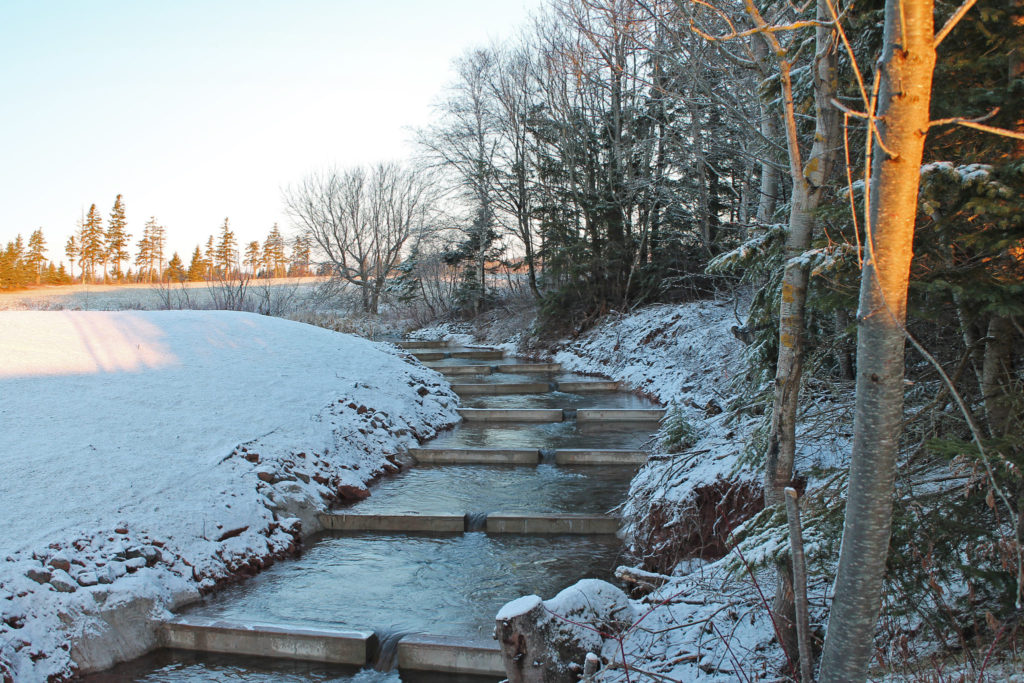Improving connectivity and enhancing productivity of aquatic ecosystems through understanding anadromous (river migrating) fish passage in DUC wetlands.
About the Study
DUC manages or co-manages more than 150 fishways in Atlantic Canada, many of which are in or near coastal habitats. These fishways were originally designed to pass strong swimming species such as brook trout and Atlantic salmon. The objective of this project is to first understand how well existing fishways work to pass weaker swimming anadromous fish species including alewife and rainbow smelt. This information will be used to redesign fishways to improve fish passage.
We are also researching the importance of ecosystem connectivity and marine-derived nutrients transported into wetlands during spawning migration of anadromous fish. This will determine the importance of well-functioning fishways to wetland health and waterfowl habitat.
This research is being conducted near the New Brunswick and Nova Scotia border in rivers that empty into the Bay of Fundy as well as in river systems on Prince Edward Island.

Timelines
This large project began in 2013 and is being conducted in collaboration with Acadia University and University of Prince Edward Island. We completed our 2016 fieldwork and are currently planning for 2017. This is a long-term, multipart project that will build on discovered results as it evolves.
Goals & Purpose
There is limited understanding of how well fishways function and the importance of anadromous fish to freshwater wetland ecosystems. This project will improve our understanding of both and ultimately improve fish passage, ecosystem connectivity, and the transfer of marine derived nutrients into freshwater ecosystems.


